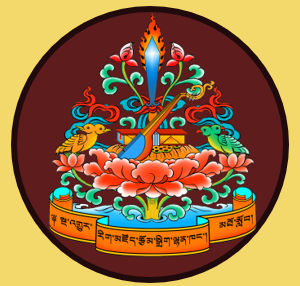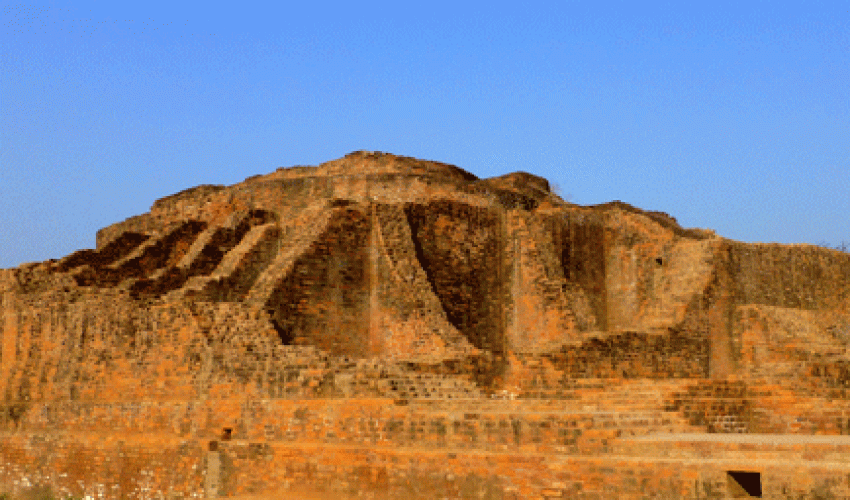Shravasti, located in the fertile Gangetic plain in the present-day Shravasti district of Uttar Pradesh, was one of the six largest cities1 in ancient India and is now one of the eight sacred sites2 associated with the life and deeds of Buddha Shakyamuni. The city was founded by King Shravasta and the name Shravasti is attributed to this. It is known as the place where the Buddha subdued demons. The significance of this place is also mentioned in many sutras, in statements such as, “Thus, I once heard: once upon a time, the Great Conqueror was staying near Shravasti in Ananthapindika’s temple at Jeta’s Grove.” This is the place where the Buddha spent most of his post-enlightenment life.
Shravasti was also the hometown of Ananthapindika, a royal patron of the Buddha. Once, when Ananthapindika went to Prince Jeta of Koshala to buy a plot in order to build a monastery for monks, the prince did not recognise that Ananthapindika was one of the richest stewards of that place and said, “I will only sell my garden if you cover it with gold pieces.” At this, Ananthapindika did cover the garden with gold pieces, after which the prince felt remorseful and offered that garden to Ananthapindika free of cost. The prince made a request that he himself would offer a part of the garden to the Buddha. Knowing this, the Buddha attended the inauguration ceremony of the shrine and named it ‘Jetavana Grove, the park of giving food to the helpless’.
At this place, Buddha spent 25 yarneys3 (20 in the courtyard of Jeta’s grove and 5 in the eastern garden of the Deer Park). The ‘supreme pair’ (Shariputra and Maudgalyayana, the two main disciples of Buddha), the sixteen arhats (disciples of the Buddha who vowed to preserve the Dharma until the coming of Maitreya Buddha), Kashyapa, Udayin, Ashvapa and eighty other chief attendants were said to have lived at this place. During the Buddha’s time, the population of Shravasti was about 700,000, of which 500,000 followed the Buddha, 100,000 followed tirthikas (non-Buddhist spiritual teachers) and the rest followed neither.
During the visit of the Chinese monk pilgrim Faxian4 (337–ca. 422) in the fourth century, he noted that the place was very populated with around 200,000 residents. According to Faxian’s journal, a stupa of a devoted nanny, a parinirvana stupa of the Buddha at the place where his body was cremated, and the stupas of many shravakas were inside the boundary of the city. At a distance of around 16 footsteps,5 on the western side of its south exit, lay Jeta’s grove facing its entrance towards the east. Outside of its right-side door was a wheel on an obelisk and an image of the Buddha on the left. There was also a crystal clear pond and a beautiful garden.
At Shravasti, King Prasenajit carved an image of the Buddha in sandalwood when he missed the Buddha desperately during the Buddha’s visit to the Trayastrimsa heaven to teach his mother. Later, this image was said to have gone to welcome the Buddha during his descent from the Trayastrimsa heaven. The Buddha saw it and told it, “You go to your place. Later, when seekers of the four noble truths ask for my image, they should copy you.” Thus, this was known as the very first image of the Buddha that people copied from. Another interesting story about that image relates that one day the main shrine caught fire and people were worried that the image might have been burnt and destroyed. But the next day, to their utter astonishment, the image remained the same as before.
There were worship halls built at each of the places that the Buddha visited and each of them had particular names. They had remained undamaged during Faxian’s visit, but later, during the visit of another Chinese pilgrim, Xuanzang6 (ca. 602–664), he described the village of Shravasti as fully ruined with only a few scattered houses left. Even in Jeta’s grove, there only remained two 70-cubit-high stone pillars on both sides of the eastern door whereas the pillar on the right-hand side had an engraved image of a cow.
Shravasti is also the place where Shariputra and Maudgalyayana used to compete in their miraculous powers. It is also said that the forest that emerged from planting the walking sticks of 500 blind people was there, as well as the three pits into which an evil-minded girl, Devadatta and the bhikshu Kokalika fell into hell alive for deprecating the Buddha.
During the Buddha’s stay in Shravasti, due to his huge popularity, most of the people would revere him whereas envious tirthikas would denigrate him. At this place, the Buddha repeatedly defeated the six non-Buddhist masters7 who were proficient in epistemology and terminology, as well as the display of miracles. Faxian said that there was a six-storey temple at the place where the Buddha miraculously defeated the tirthikas.
During the visit of Amdo Gendun Chӧphel (1905-1951) to Shravasti in the early 20th century, there were the remains of a temple to the east of the Deer Park, as well as the ruins of Raj Kuti, Koshambi Kuti, Kakeri Kuti and Gandha Kuti in Jetavana grove. It is also said that there is a remaining architrave that was used to build the Buddha’s residence, which is considered to be the one and only object remaining in the world from that period. Raj Kuti was later known as the Sala temple and was used by bhikshunis during their summer retreat after the Buddha passed away. Those kutis consisted of a courtyard at the lower end while the inner side’s breadth was around one and a half armspans.
After the passing of the Buddha, the shravaka Kashyapa pointed out eight faults of Ananda and went to Shravasti while the other bhikshus of Shravasti also did the same. This disheartened Ananda, who went alone to Jetavana, where the Buddha used to reside. There, he would clean the surroundings, prepare water and a toothpick, and arrange the bed in the evening like he did during the Buddha’s time. The people of Shravasti started missing the Buddha more whenever they would see Ananda doing these activities.
When Faxian saw the Buddha’s empty throne, he deeply lamented and spoke these words: “Ema!8 It seems the chief among the worldly people (the Buddha) spent 25 years in this place until he became aged. Kyi-hui!9We wandering beings, holding the same intention to travel to holy places—some returned to their homes and some showed the nature of this impermanent lifespan (died), thus not being able to make it here. Today, I may have arrived at this place but the Buddha, the transcendent victor, is not present.”
As Amdo Gendun Chӧphel stated, “Though Shravasti is a place where all Buddhists can reflect on the inconceivable activities of the Buddha, the pilgrims turn right and then left from Ambarsar10 and miss the actual place, Shravasti, which is so sad. We devoted followers of Buddhism should not only go on pilgrimage intending to eliminate adverse circumstances and obstacles, but also to recollect that the leader of gods and men in this physical world appeared as a human being and displayed various deeds. If one visits with this intention, one will surely experience the same feelings that Faxian experienced during his visit and will shed tears.” Hence, we request all devotees who come across it to visit this sacred place at least once.
By Rigzod Editors
- Shravasti, Saketa, Champaka, Varanasi, Rajagriha and Vaishali.
- Lumbini, Bodh Gaya, Sarnath, Rajgir, Vaishali, Shravasti, Sankassa, and Kushinagar.
- The summer retreat in religious confinement according to the Vinaya Sutra.
- A Chinese Buddhist monk who travelled on foot from China to India, visiting many sacred Buddhist sites in what are now Xinjiang, Pakistan, India, Nepal, Bangladesh and Sri Lanka, between 399 and 412 CE, to acquire Buddhist texts.
- Some translations say 200 footsteps from the eastern side of its southern exit.
- A Chinese Buddhist monk, scholar, and traveler in the early Tang dynasty.
- Purana Kashyapa, Maskari Goshalputra, Sanjayi Vairadiputra, Ajita Keshakambala, Katyayana and Nirgantha Jatiputra.
- An exclamation of sadness.
- Sound of weeping, lamentation.
- A city in the north-western part in India.



